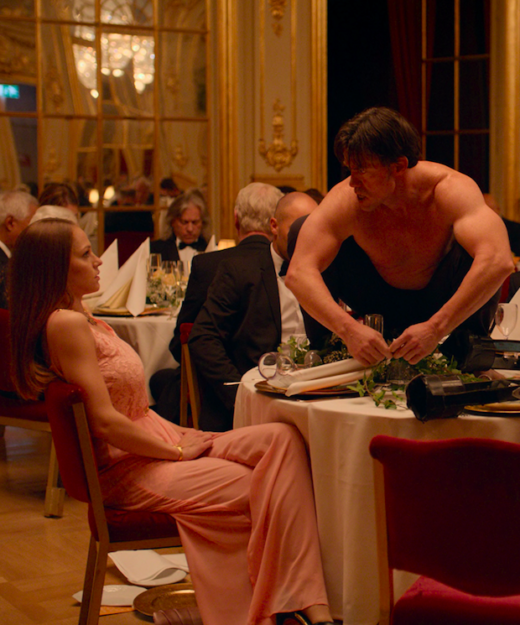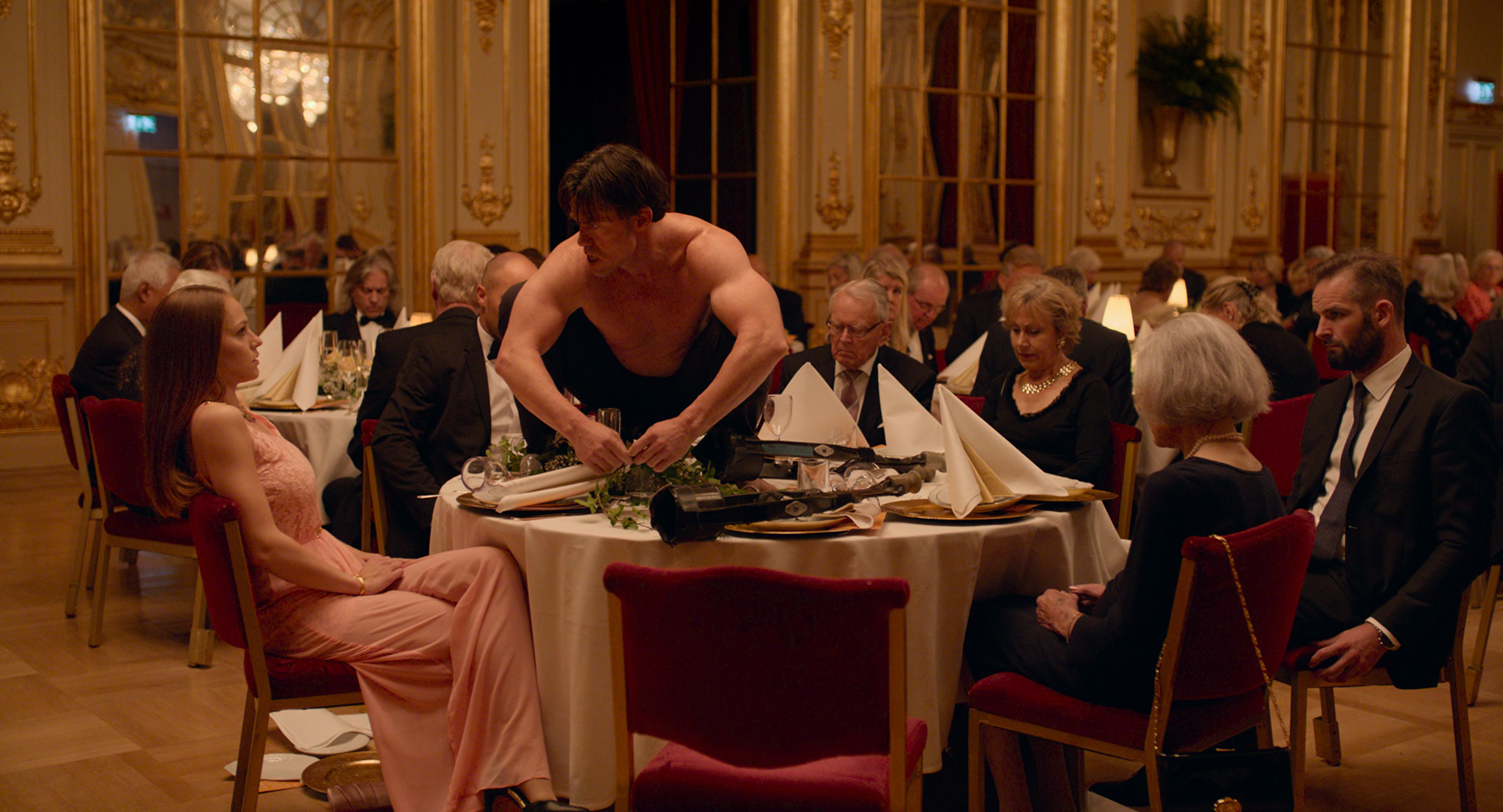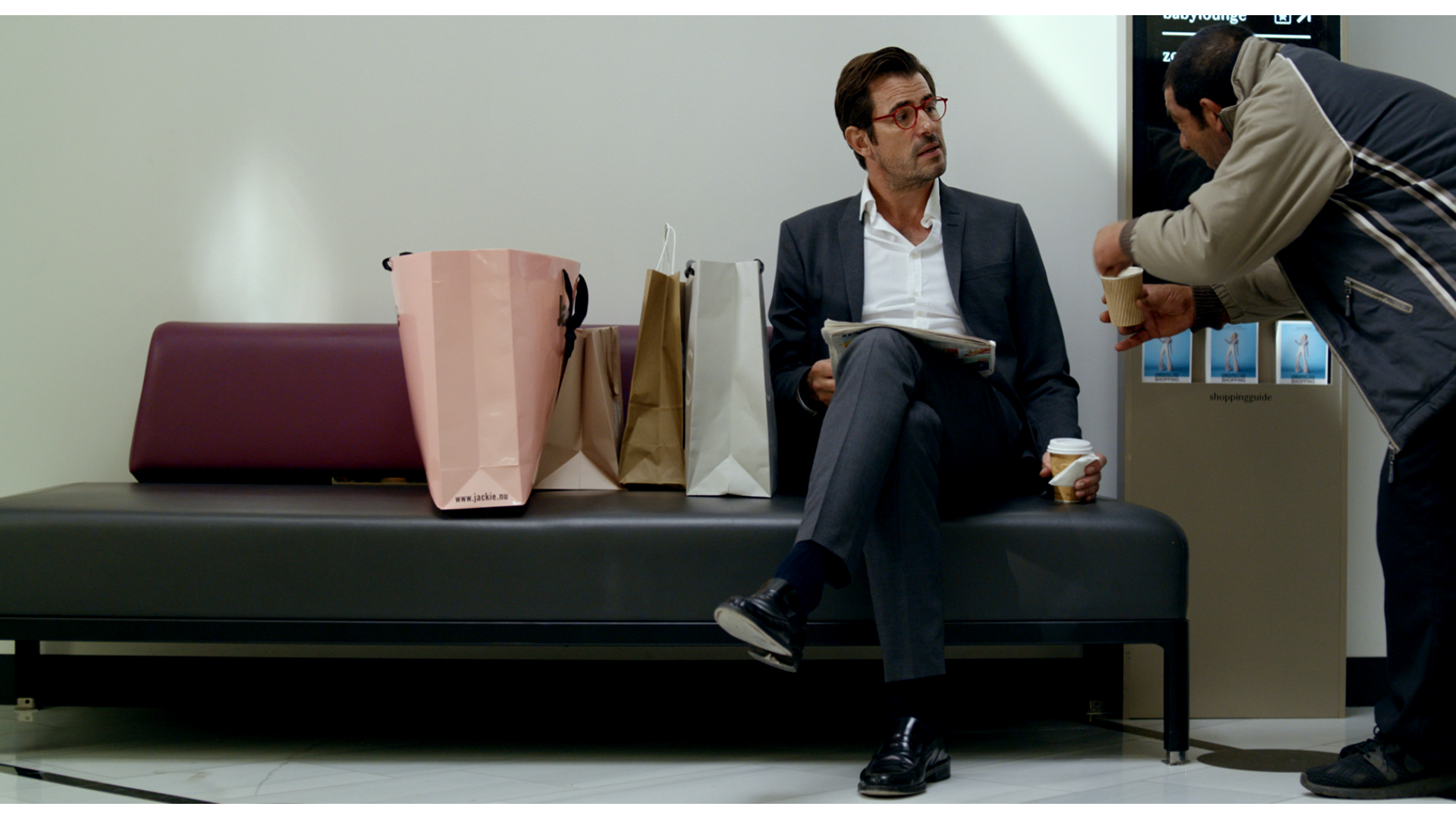Film Review: The Square
Cara Despain

Written and Directed by Ruben Östlund
Released 25 August 2017 (Sweden)
In cinema, the art, artists and other denizens of the art world are often exaggerated and gooney. Think Julianne Moore as Maude Lebowski or people puzzling over some abstract painting that looks more like movie theater carpet design. These characterizations allow for a clear distinction between the movie version and reality. Swedish director Ruben Östlund’s latest film The Square uses simple yet crass depictions and juxtapositions of personas and objects that hit close enough to home to hurt. However, the film plays to a broader audience. For us in the art world, I think self-reflection is more appropriate here than film criticism or analysis.
Most of the banal chaos in The Square falls squarely on tall, thin, white, attractive Christian (Claes Bang), a well-to-do chief curator at the X Royal Museum in Stockholm. The first few scenes set the tone: the art is played by multiple uniform piles of rocks and neon signs that read “YOU HAVE NOTHING”. Outside, a bronze equestrian statue is removed from the plaza, which symbolically results in its beheading as it slips from the careless grip of a crane. In its place, a perimeter of LED lights in the shape of a square is installed in the cobblestone plaza, a fixture of a forthcoming exhibition. Christian struggles to explain a text from the museum’s website to an American reporter (Elizabeth Moss) who asks him to clarify its standard jargon: “non-exhibition”, “site/non-site”, “public-ness”, “exhibitable”, “topos”, and, of course, a mention of Robert Smithson. At a reception for the announcement of a fifty-million dollar Kroner donation, upper-crust museum members and patrons abruptly abandon decorum and stampede to be the first in line for the gourmet dinner after which the usually polite museum staff wile out on the dance floor. Christian sleeps with the reporter, art rocks get vacuumed up by accident, and Christian’s negligence allows a distasteful campaign by a millennial PR duo to bring deserved negative attention to the museum. Big crises within the microcosm of the museum which are trivial in the larger world just beyond its doors keep arising. Does this sound like the art world as we know it? Well, yeah.
 A scene from The Square, a Magnolia Pictures release. Photo courtesy of Magnolia Pictures.
A scene from The Square, a Magnolia Pictures release. Photo courtesy of Magnolia Pictures.
Scenes unfold slowly, almost casually, in nearly self-contained vignettes and against the backdrop of the world outside the museum, a modern western city with global problems. Contrasting the “liberal elites” with the glaring poverty and human suffering of the city’s homeless, Östlund uses the simplest route to painfully illustrate the film’s opposing worlds within absurd circumstances. Some might find this frustratingly obvious, but this clever stupidity allows the film’s satire to reveal itself. In each scene, sincerity, humanity and earnestness devolve into self-satisfying intellectualizing, justification and callousness. The viewer, identifying themselves at some point along that spectrum, is implicated. By reducing and honing in on the compromised, tangled relationship art has to the cultural elite, despite its assumed obligation to communicate a more universal human experience, one that often includes misery, The Square underscores a complicit dissonance between these spheres.
 Claes Bang in The Square, a Magnolia Pictures release. Photo courtesy of Magnolia Pictures.
Claes Bang in The Square, a Magnolia Pictures release. Photo courtesy of Magnolia Pictures.
The driving force in the film is the notion of obligation, something that is revealed to be interpreted in vastly different ways by this cultural elite and the general public. This is represented in the eponymous artwork, The Square, installed in the public commons with an accompanying plaque tritely stating, “The Square is a sanctuary of trust and caring. Within it we all share equal rights and obligations.”
At the height of the museum’s and Christian’s mounting crises, the film crescendoes with its absolutely over-the-top centerpiece, a performance in a gilded ballroom at the donors’ gala. An aggressive, ape-like performer (Terry Notary) establishes the social hierarchy and pushes the alarmingly abiding audience to the brink of intervention as they struggle to identify the situation at hand and their obligations within it. It’s heavy-handed in the right way; what would be a horrifying and inappropriate performance in the real world is given the perfect provocative and absurdist home within the medium of film. Again, the duration of this scene allows the tension, intentions, and actions to morph and decay, leaving audience members to question their own values as much as they do those of the characters.
Is this us?
I can think of many situations that I witnessed during Art Week 2017 that made me feel like I was living this film. They include, but are not limited to a dinner hosted by an organization dedicated to fighting species preservation where copious amounts of seafood were over-served and promptly discarded, and a curator pondering aloud why homeless people couldn’t find a better place to sleep than Collins Park.
Though it finds a perfect foil in the world of contemporary art, The Square does not need that specific setting to operate. It merely represents real contradictions that arise in modern culture when strata of society are pushed so far apart that the realities and priorities of each are strikingly discordant when they are squeezed back together again. It’s basic relativity.
Cara Despain is an artist and writer from Salt Lake City, Utah currently living and working in Miami, FL.









